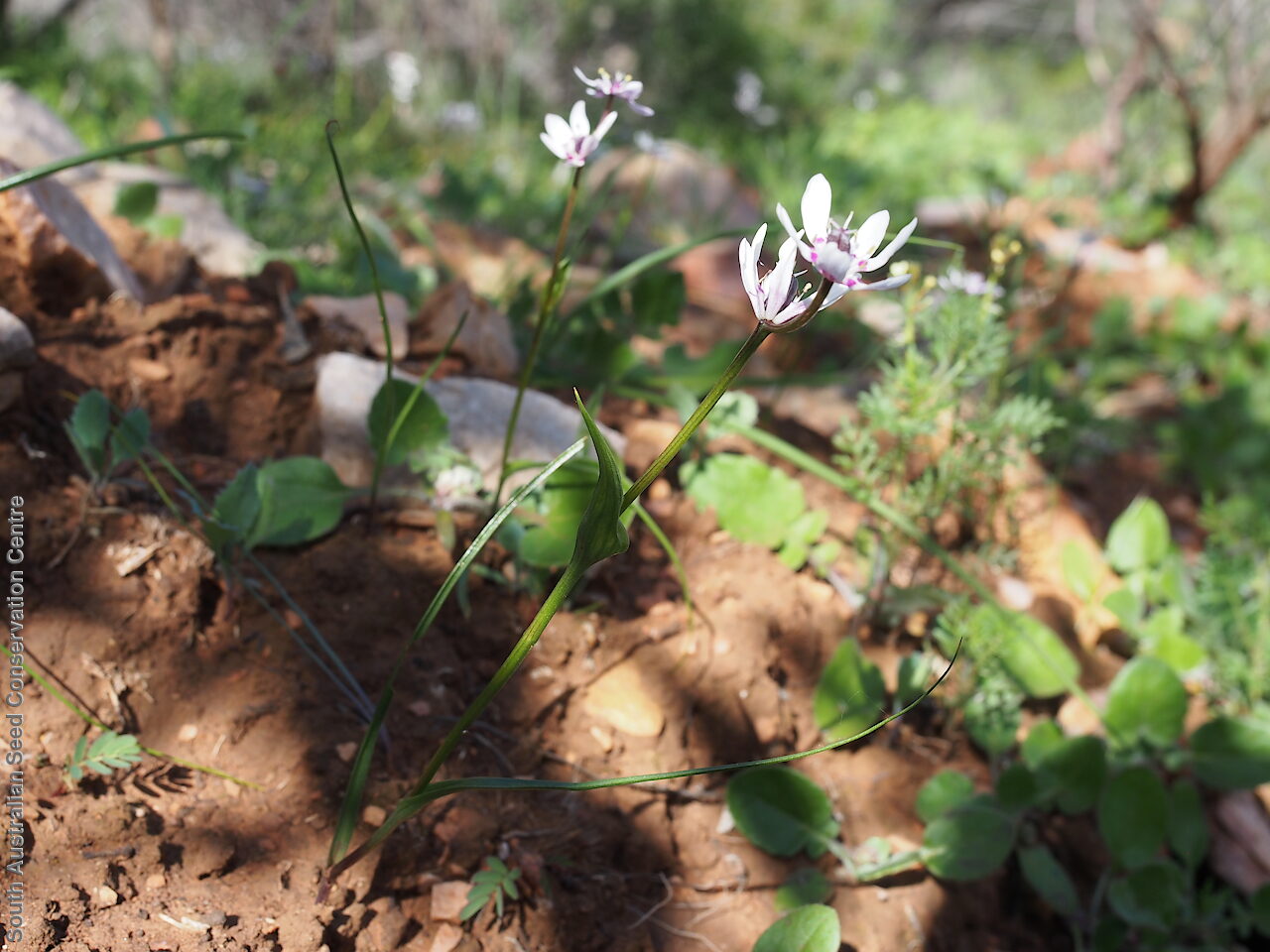
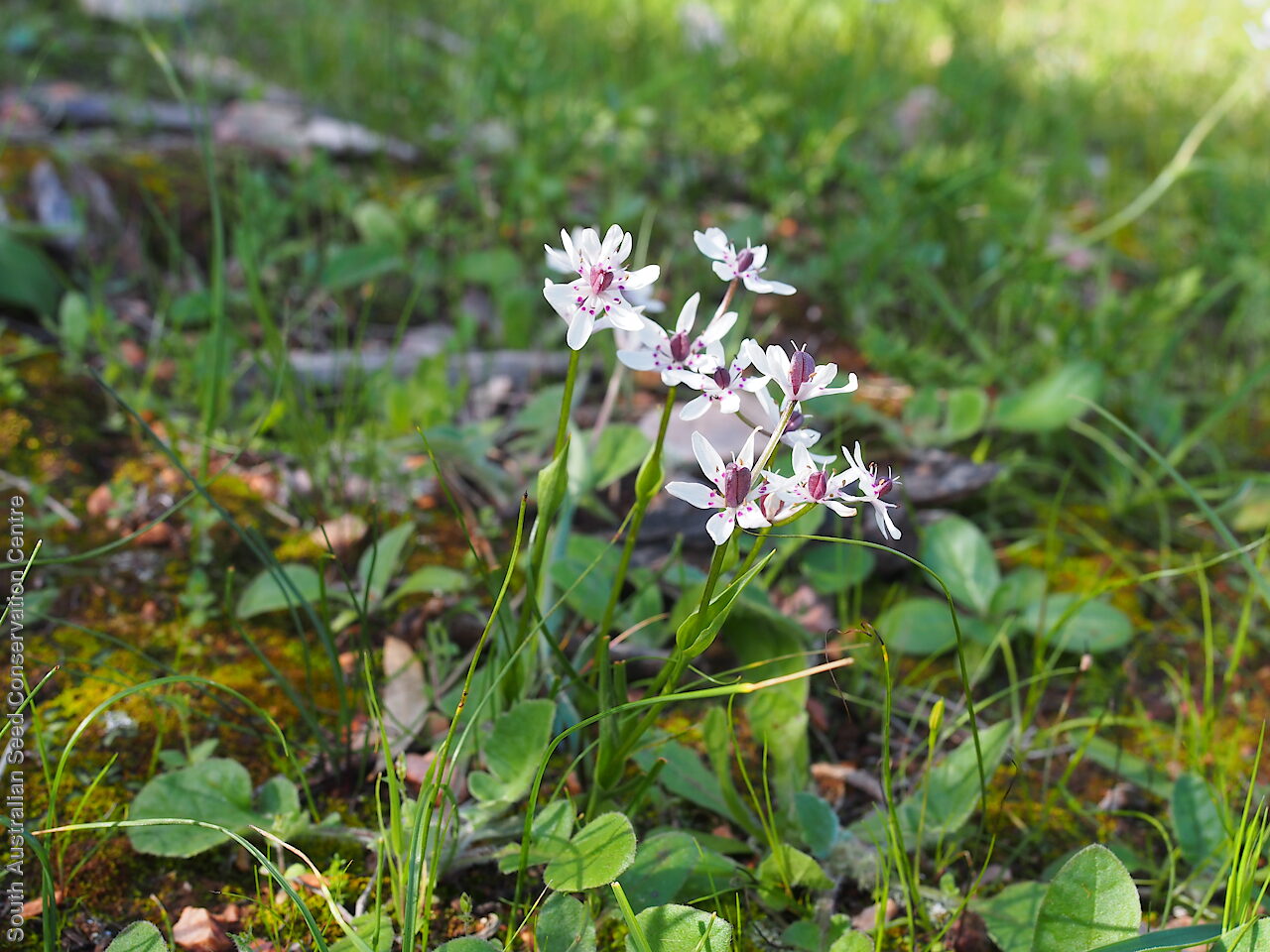
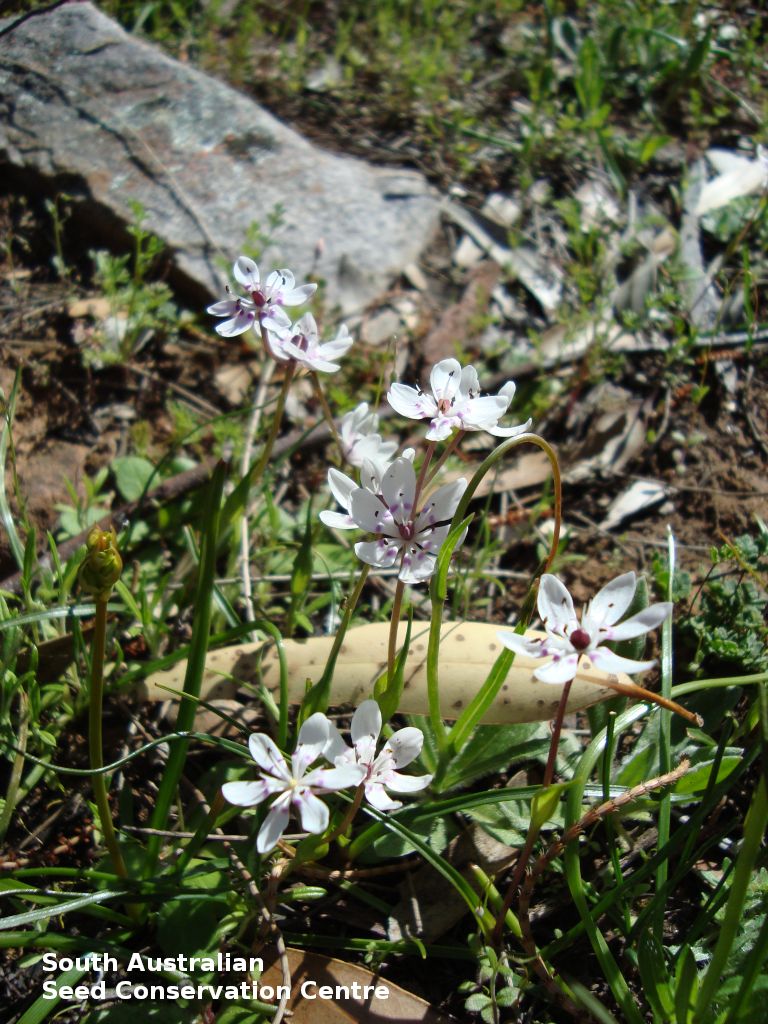
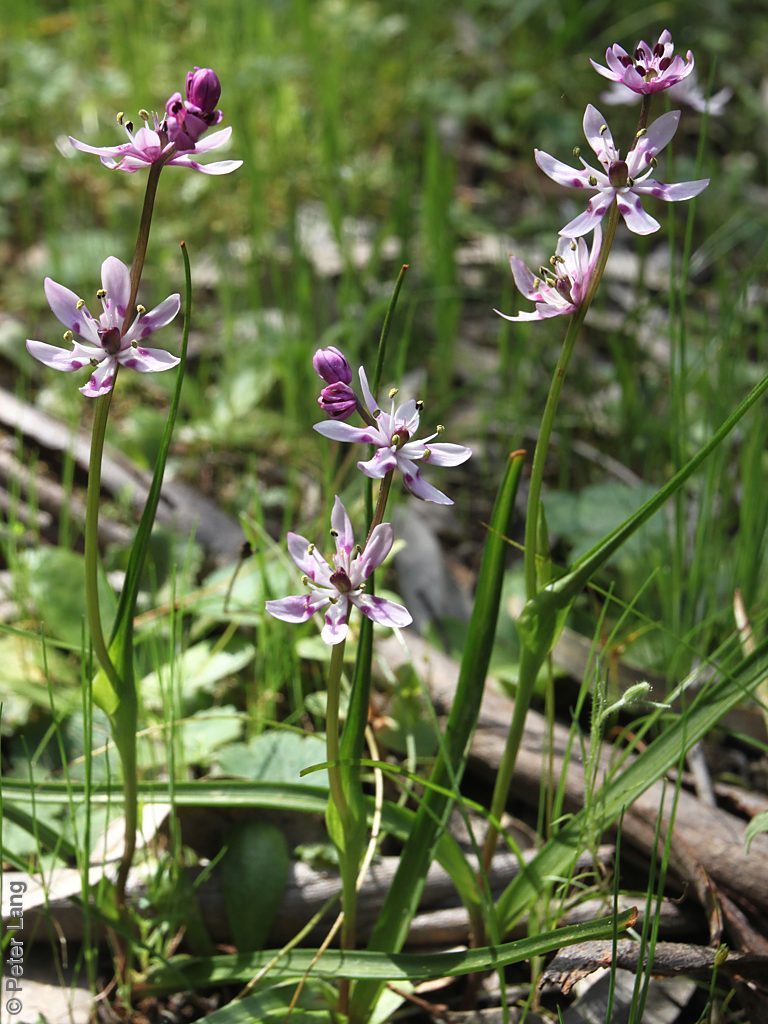
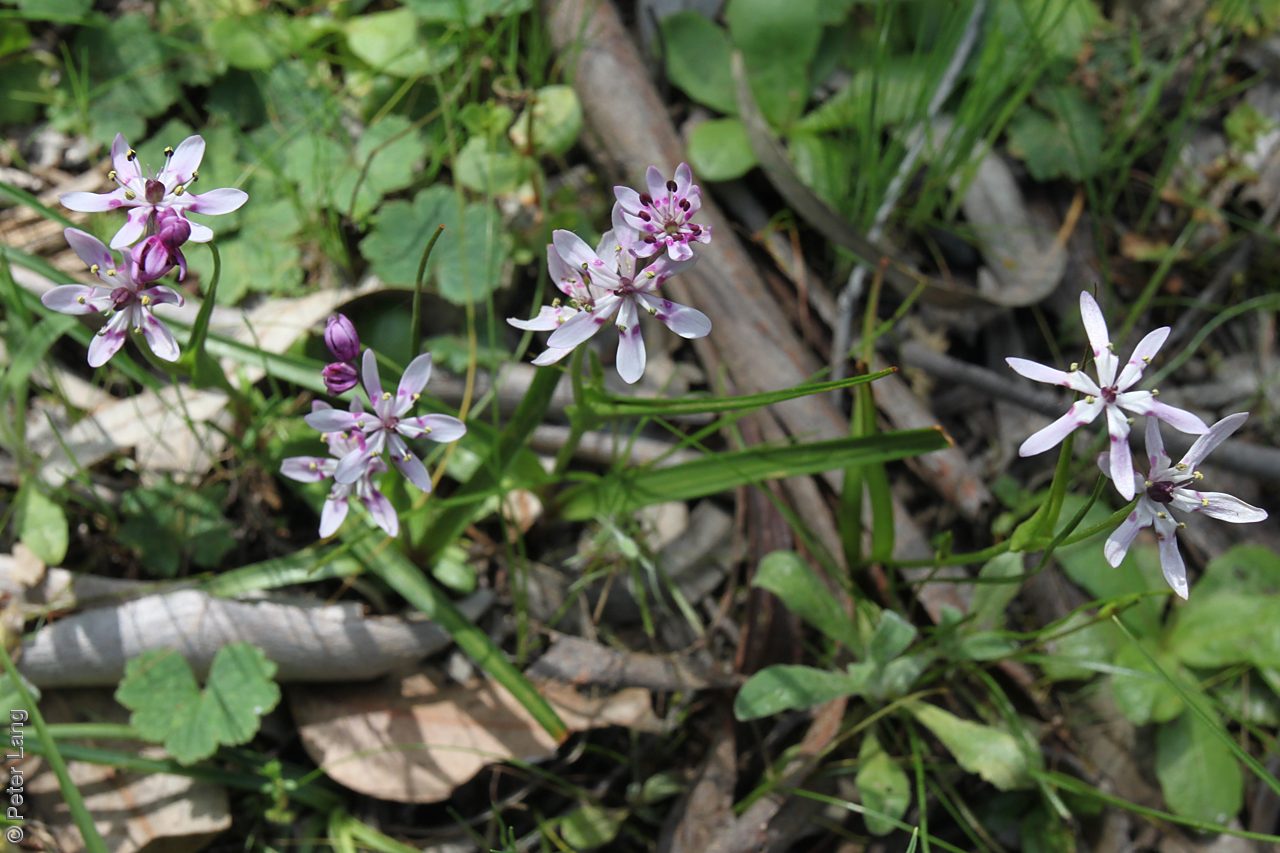
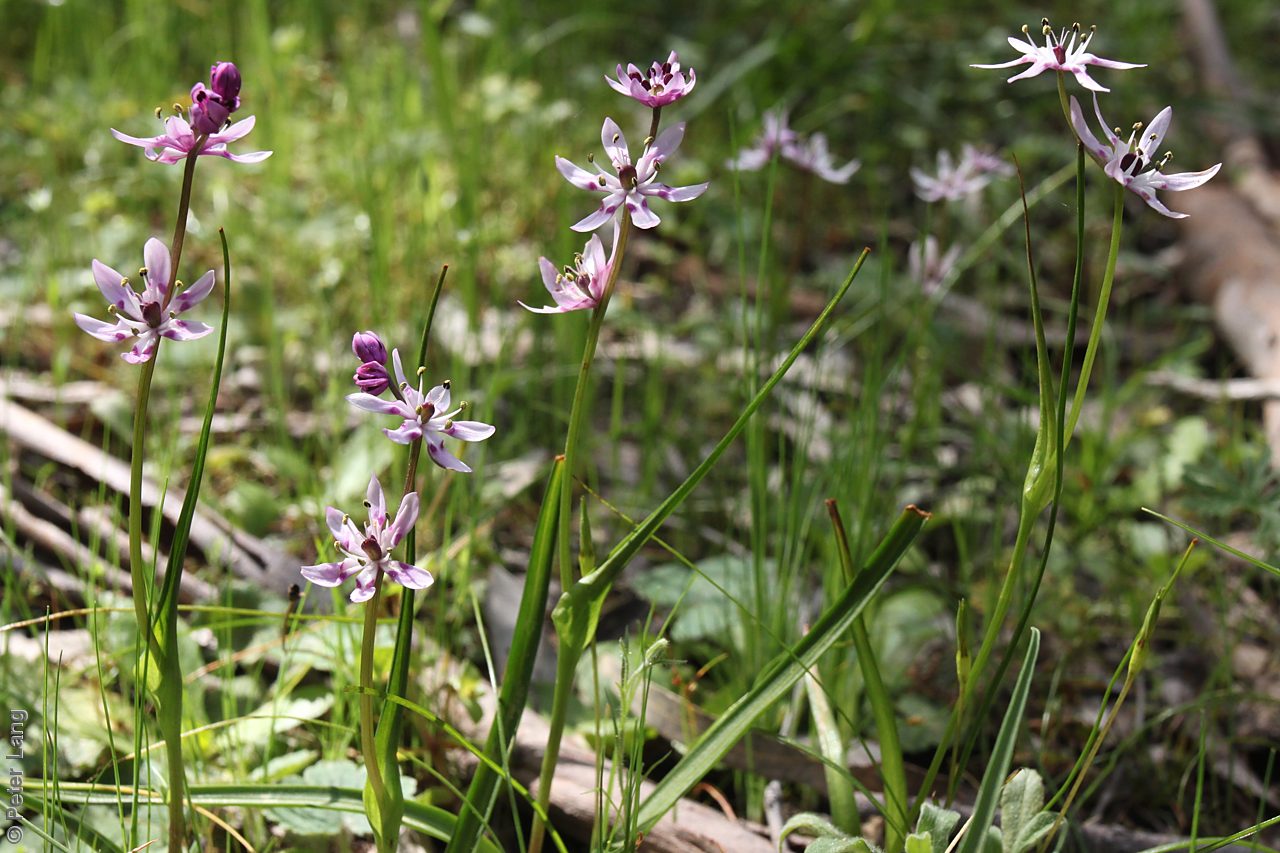
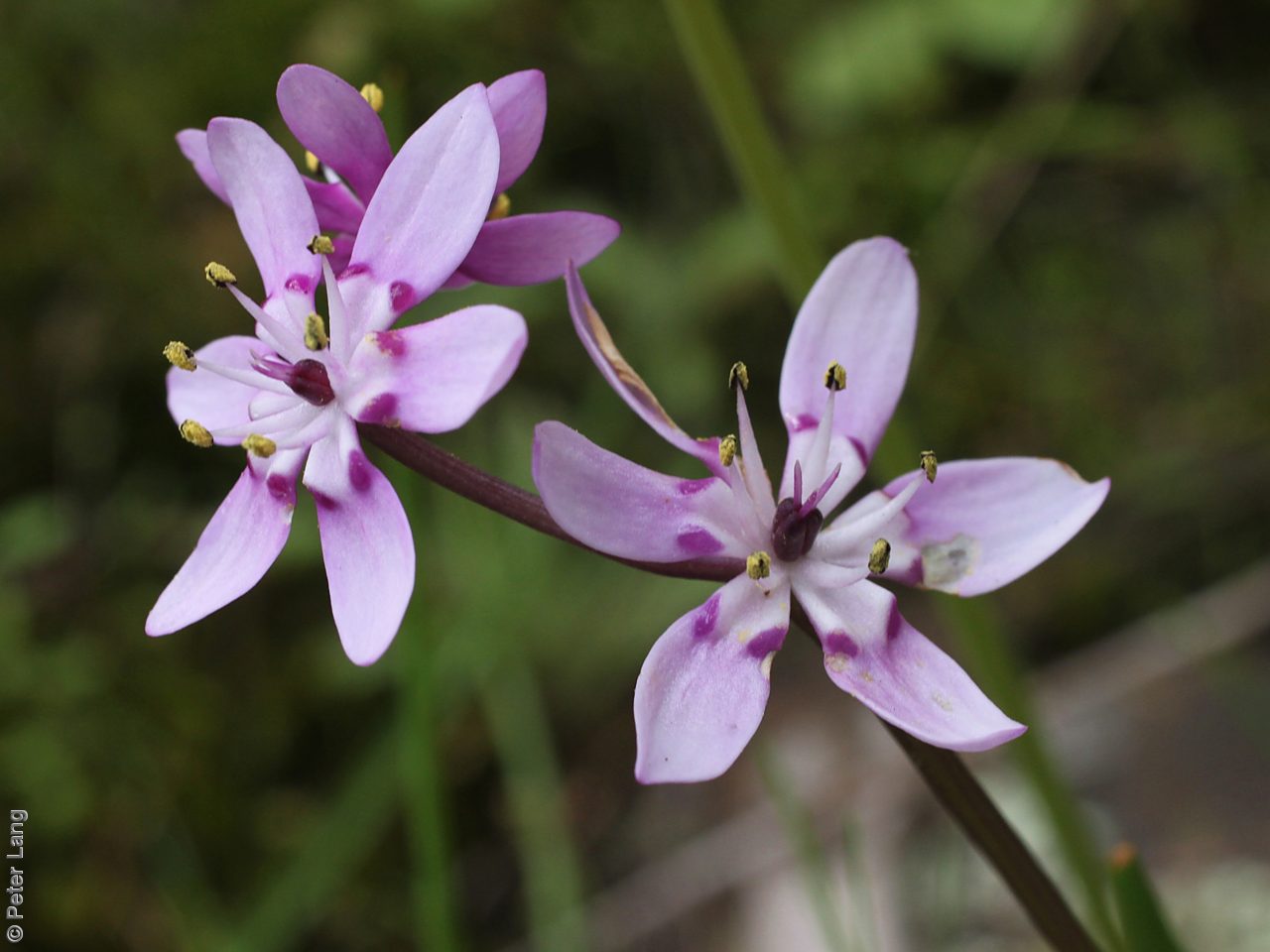
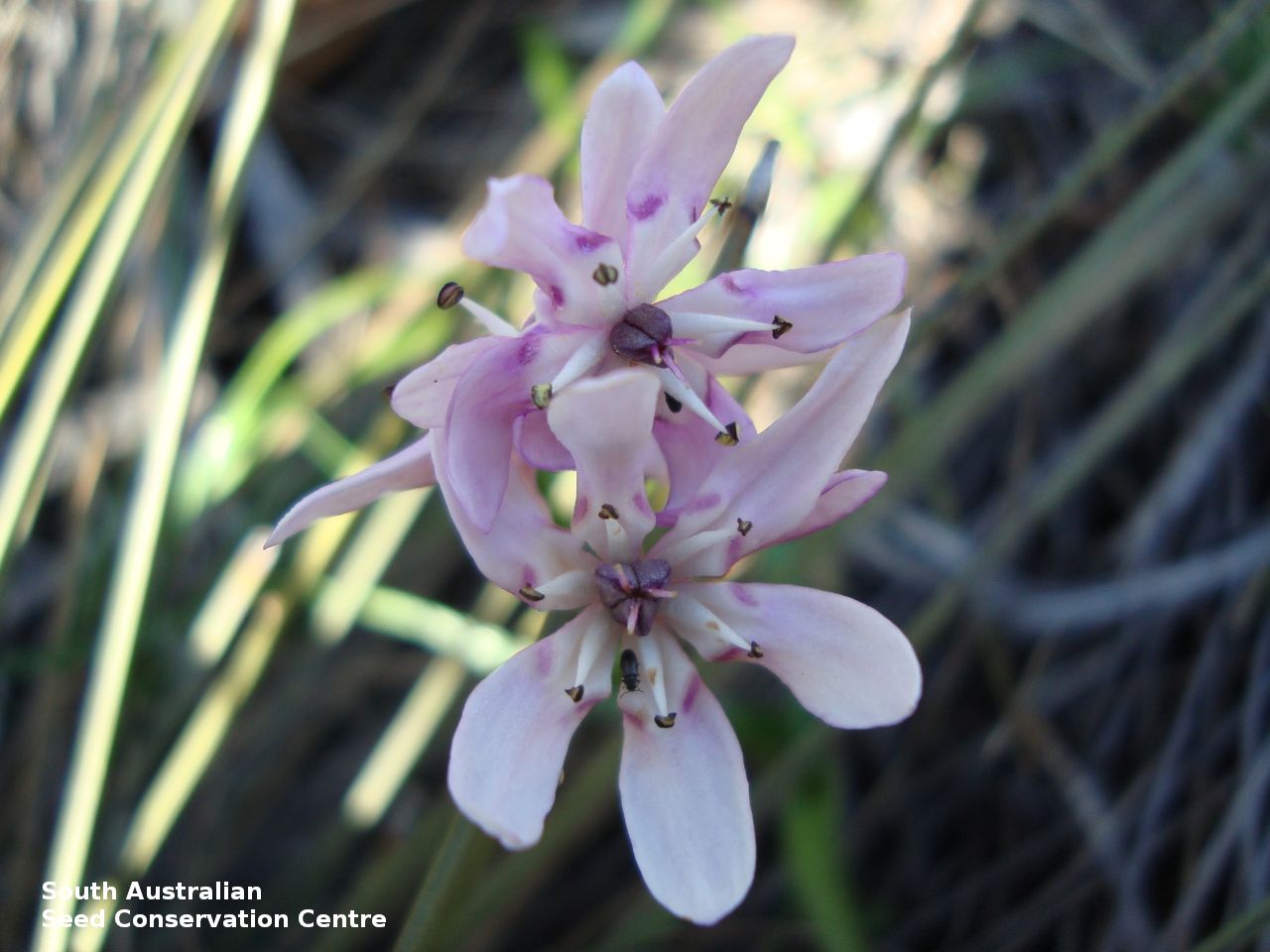
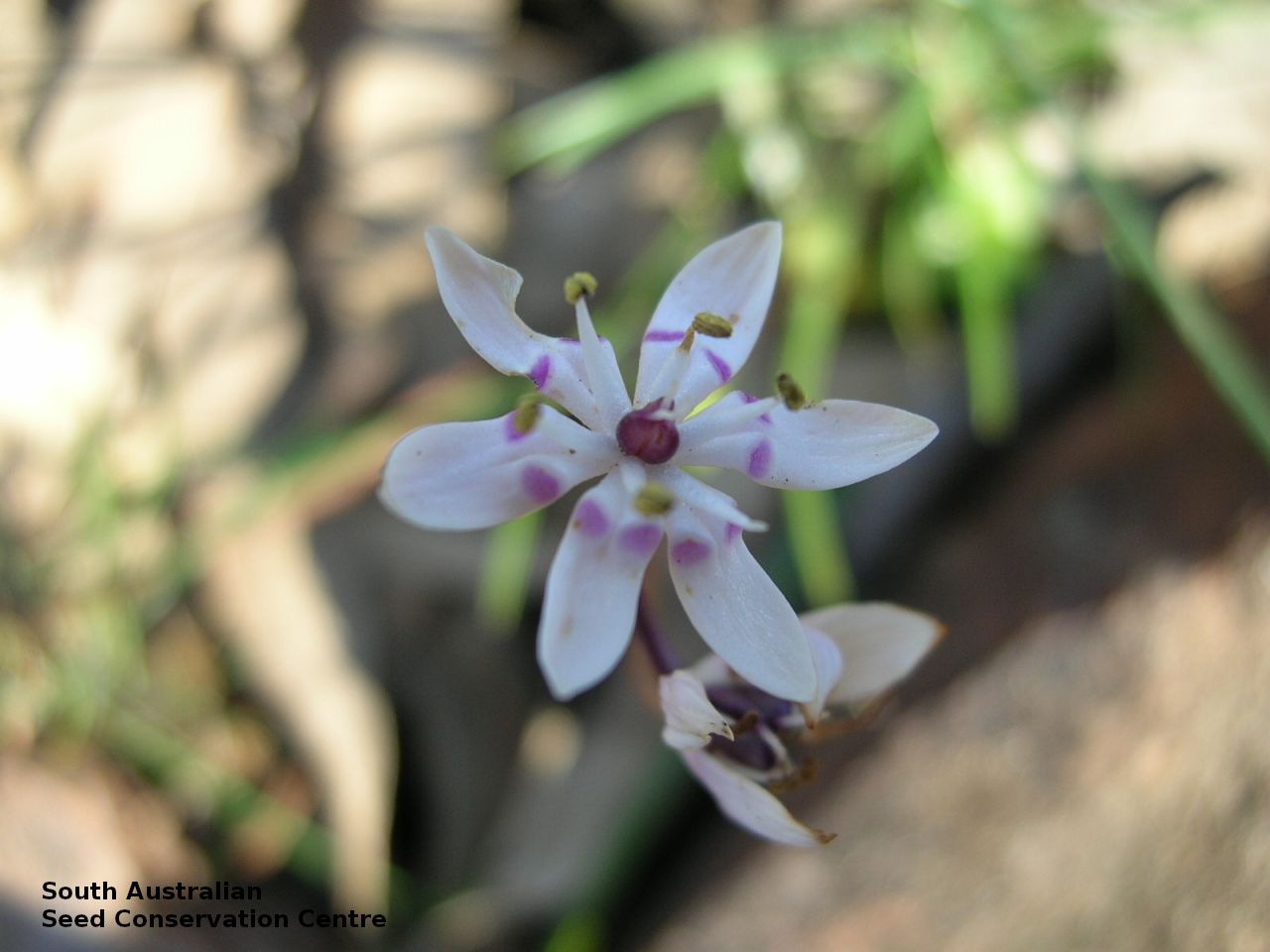
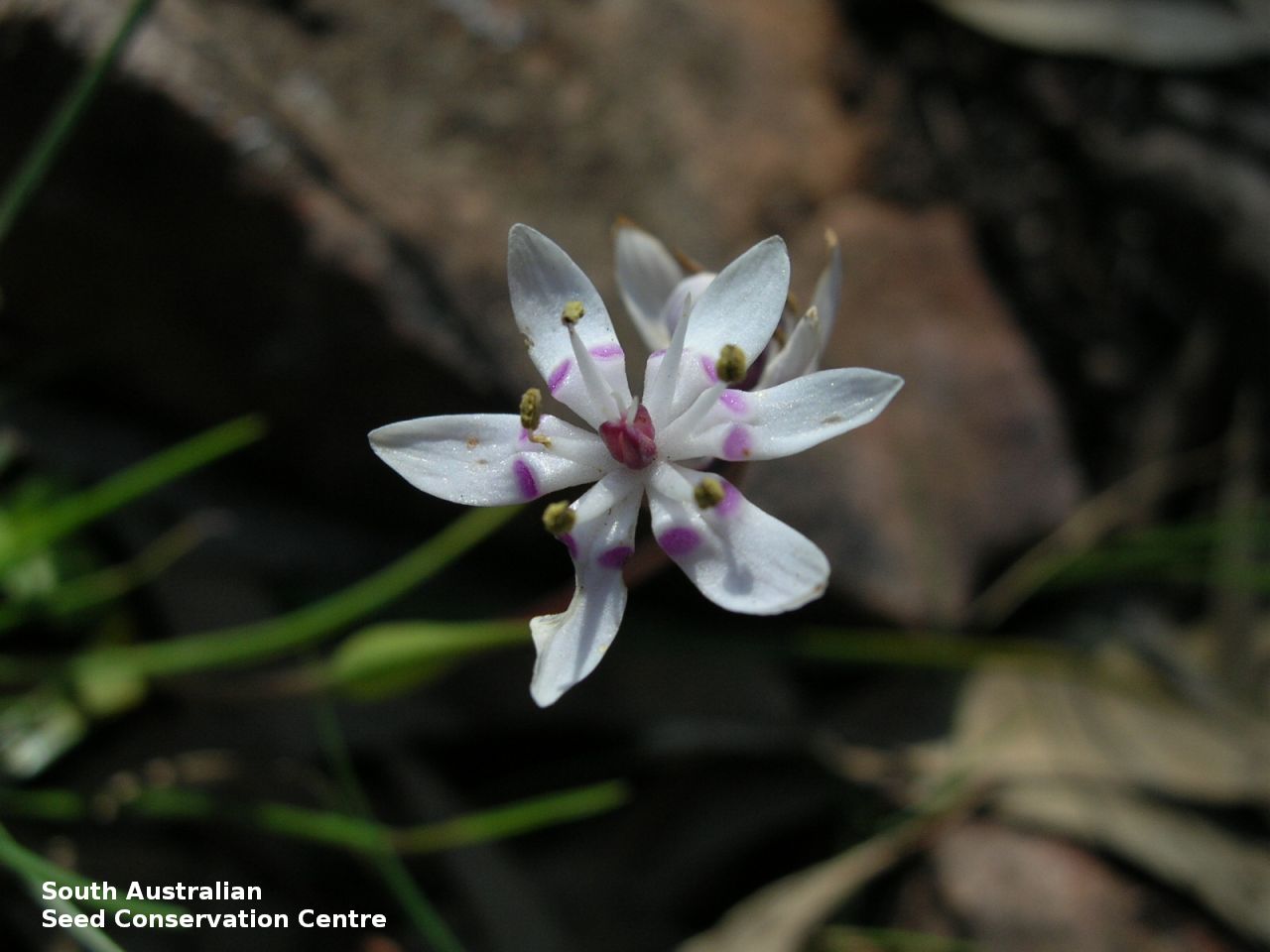
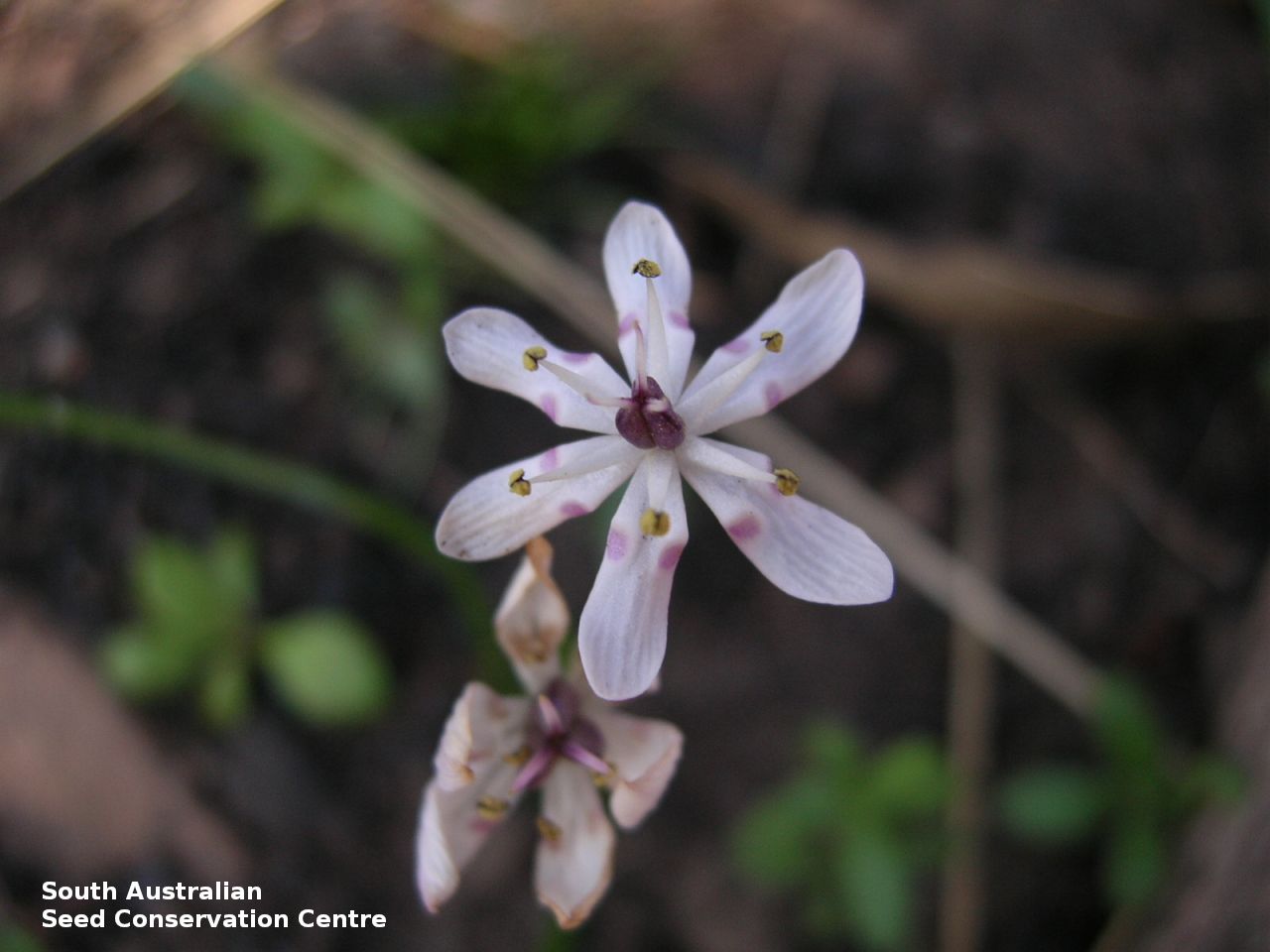
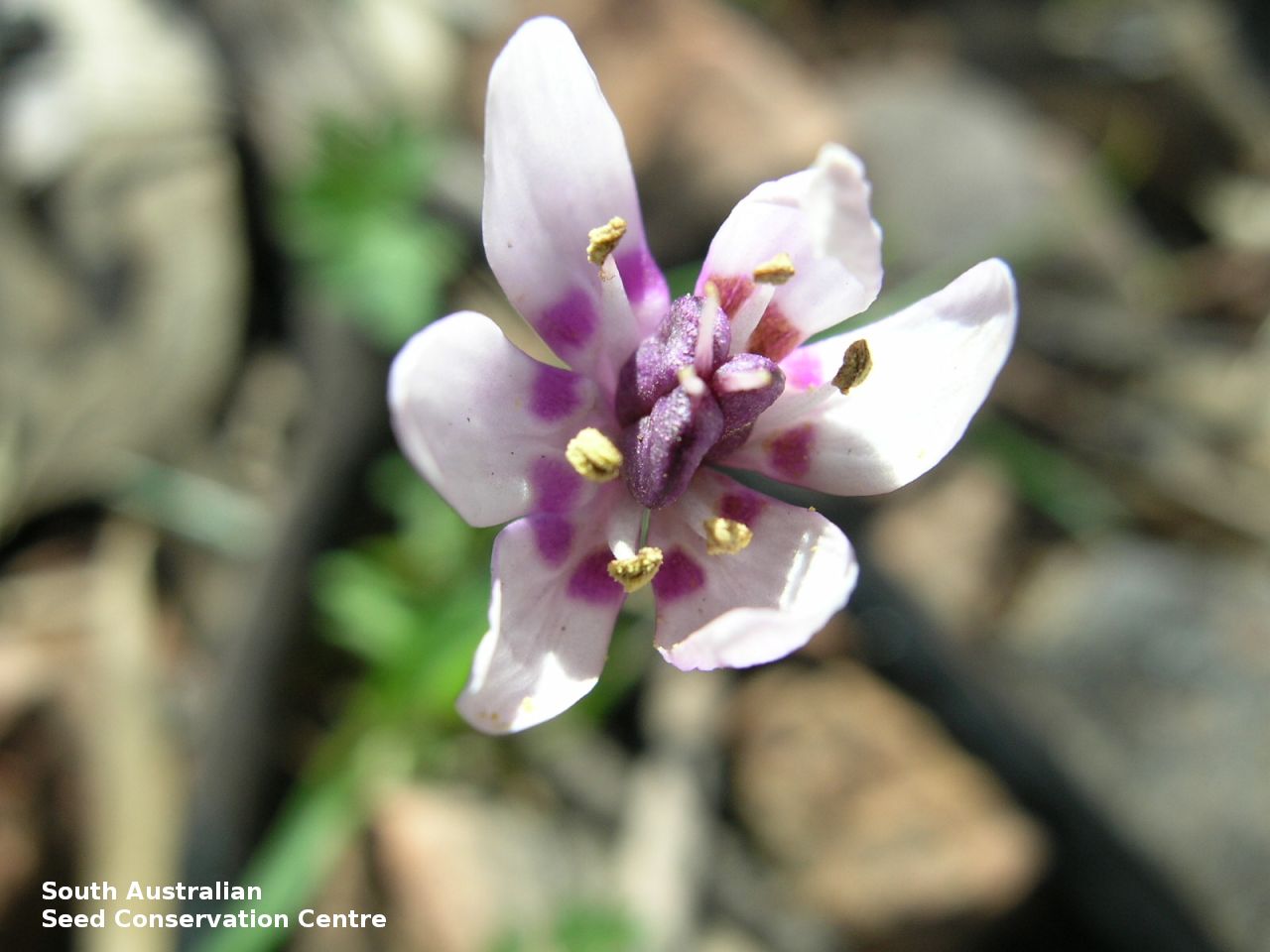
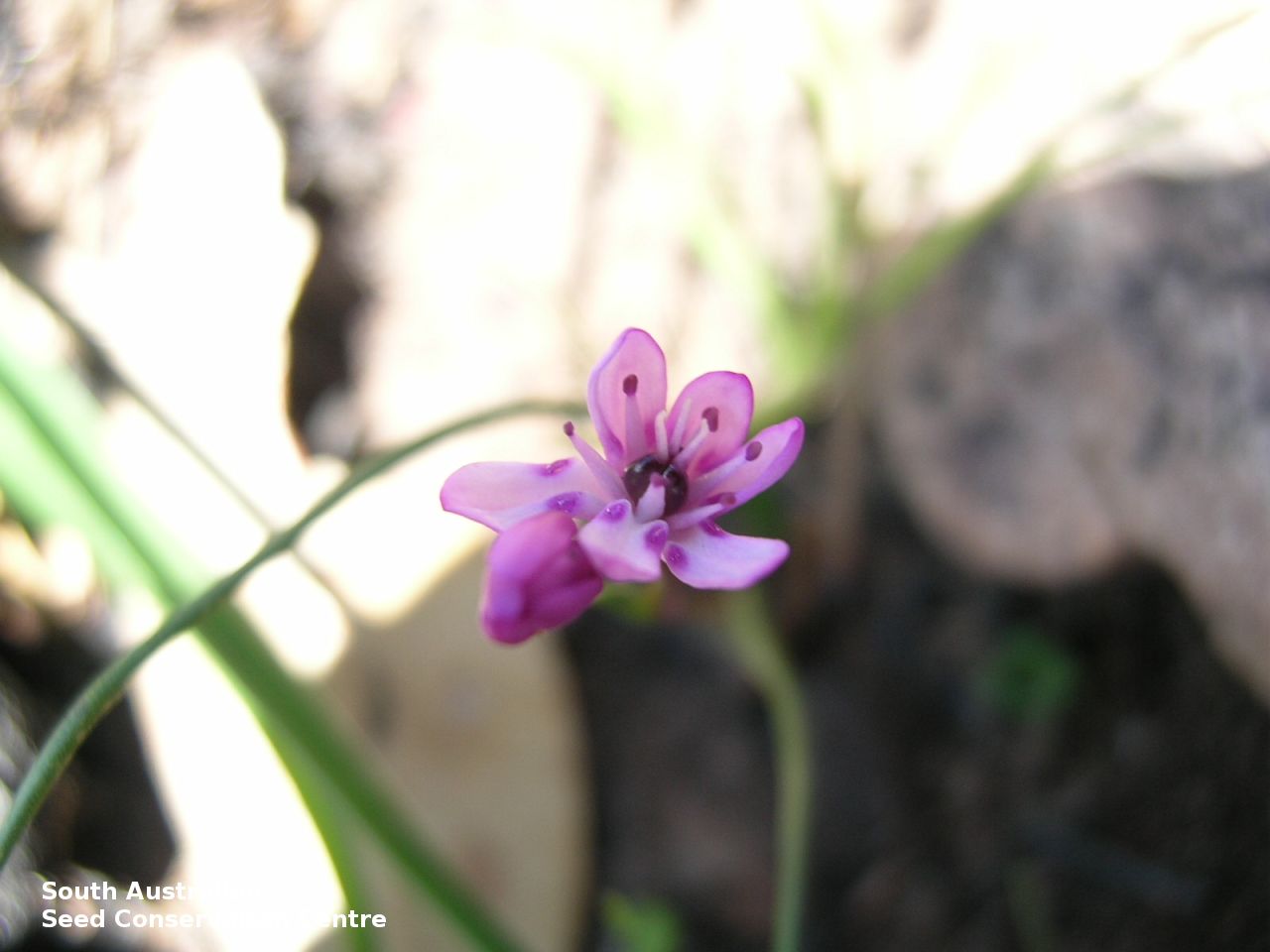
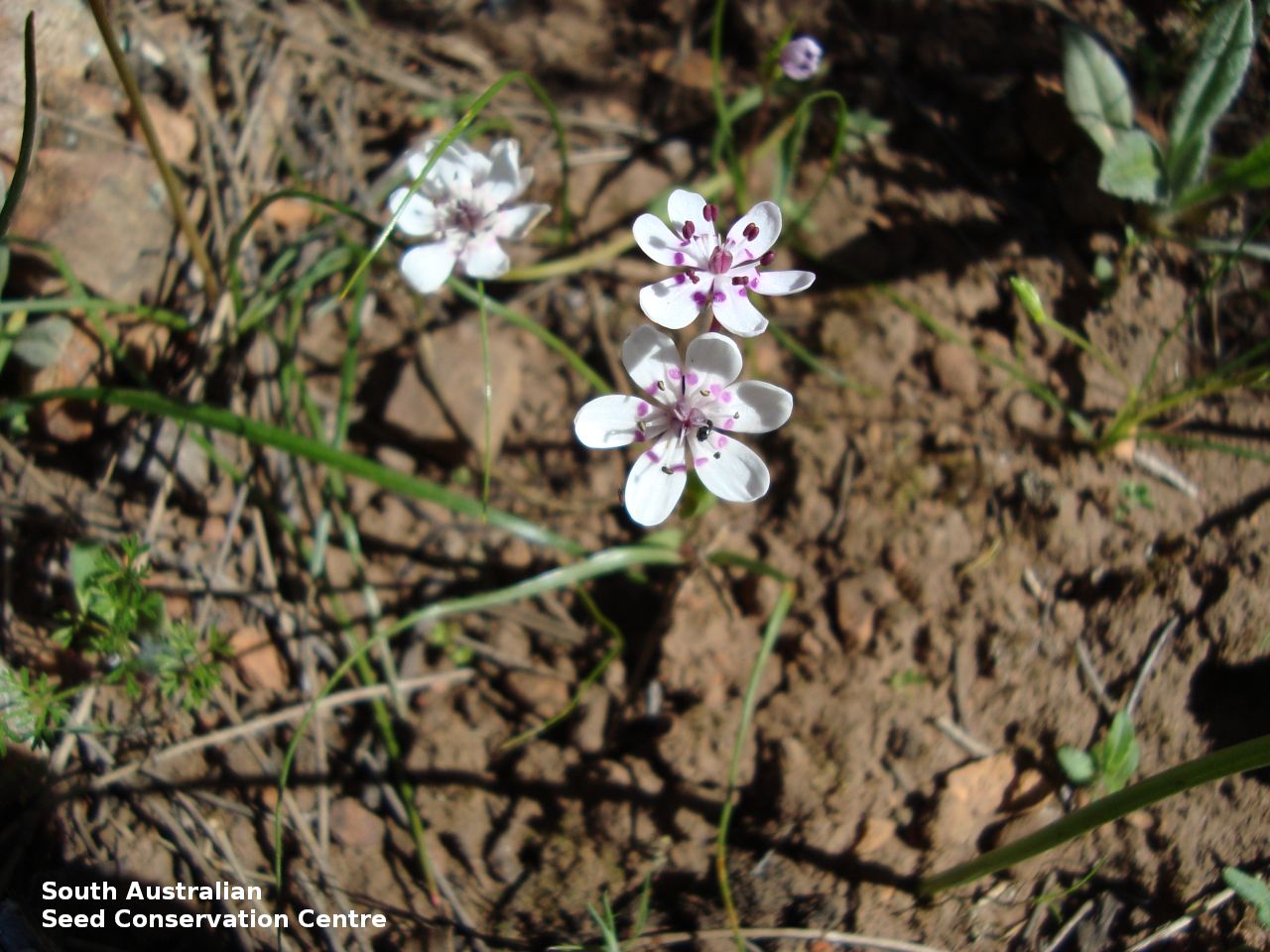
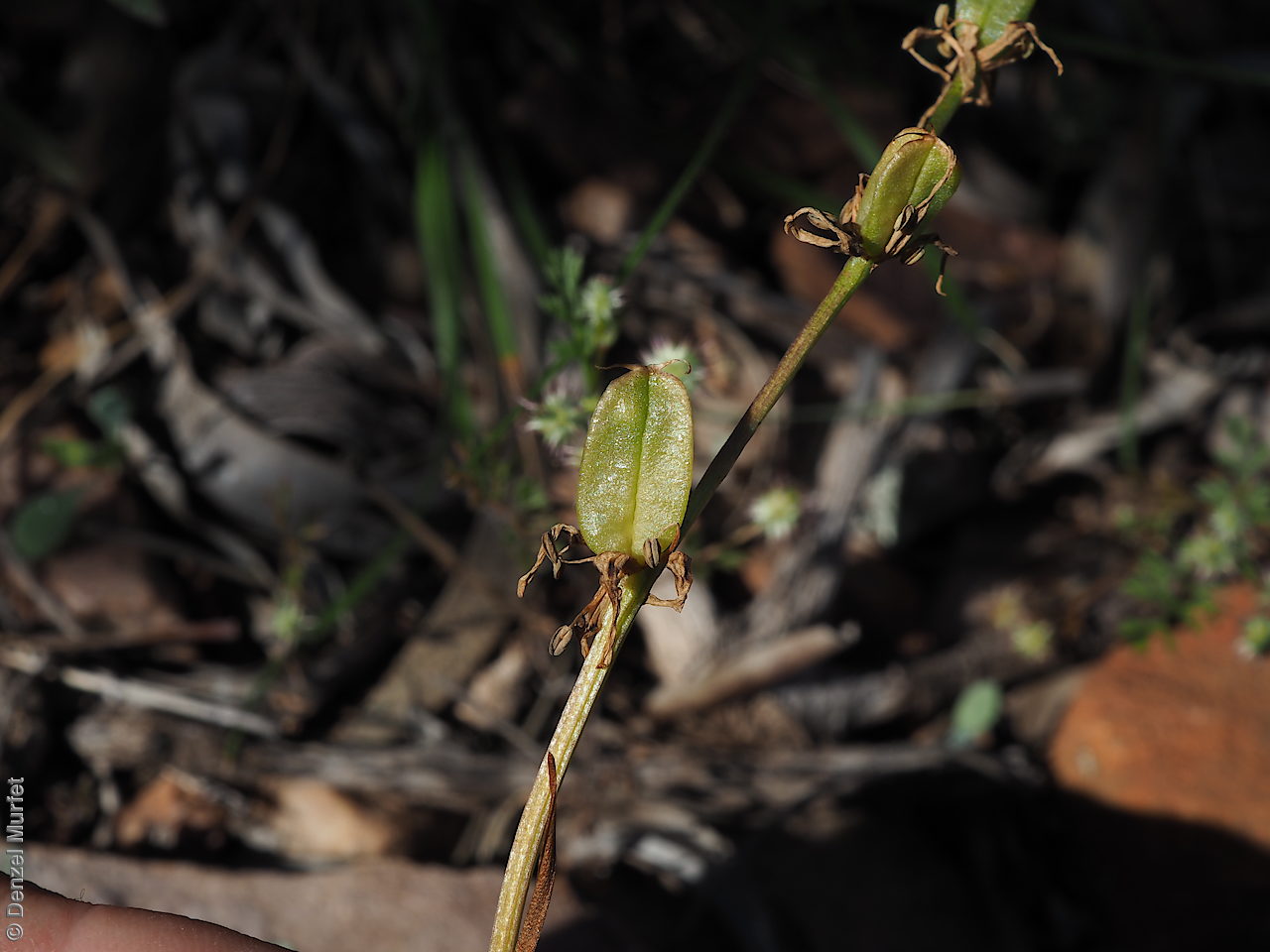
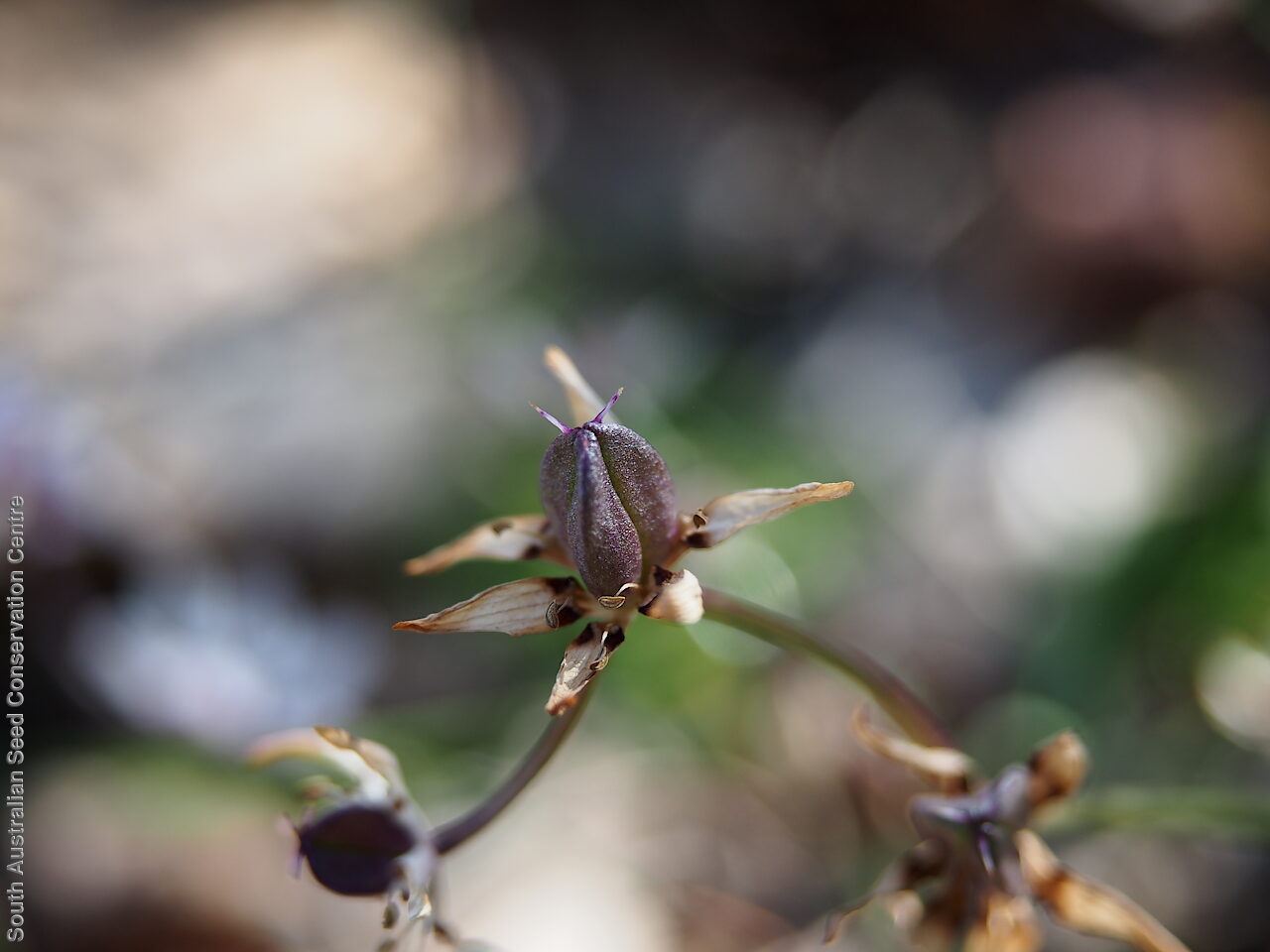
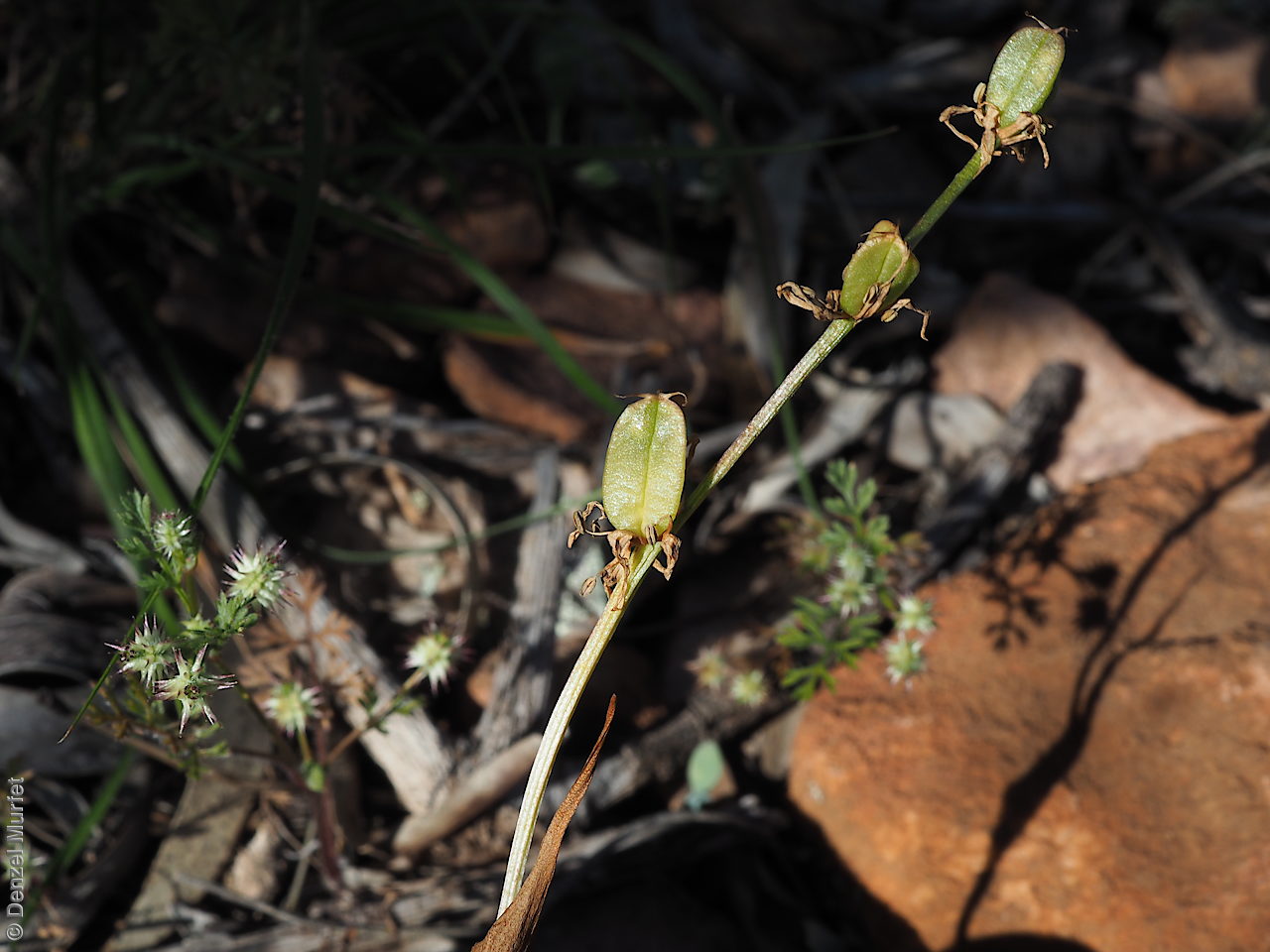
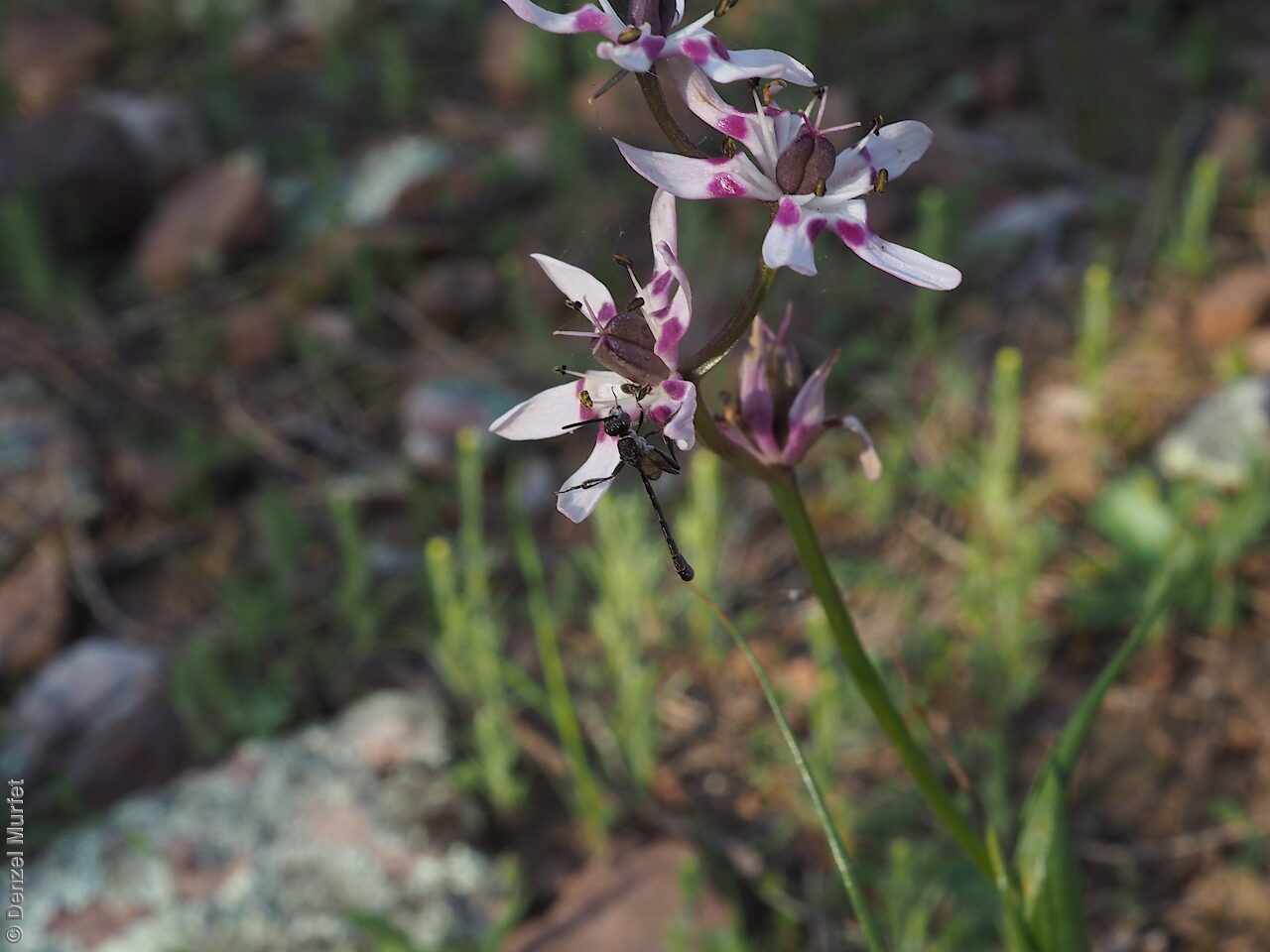
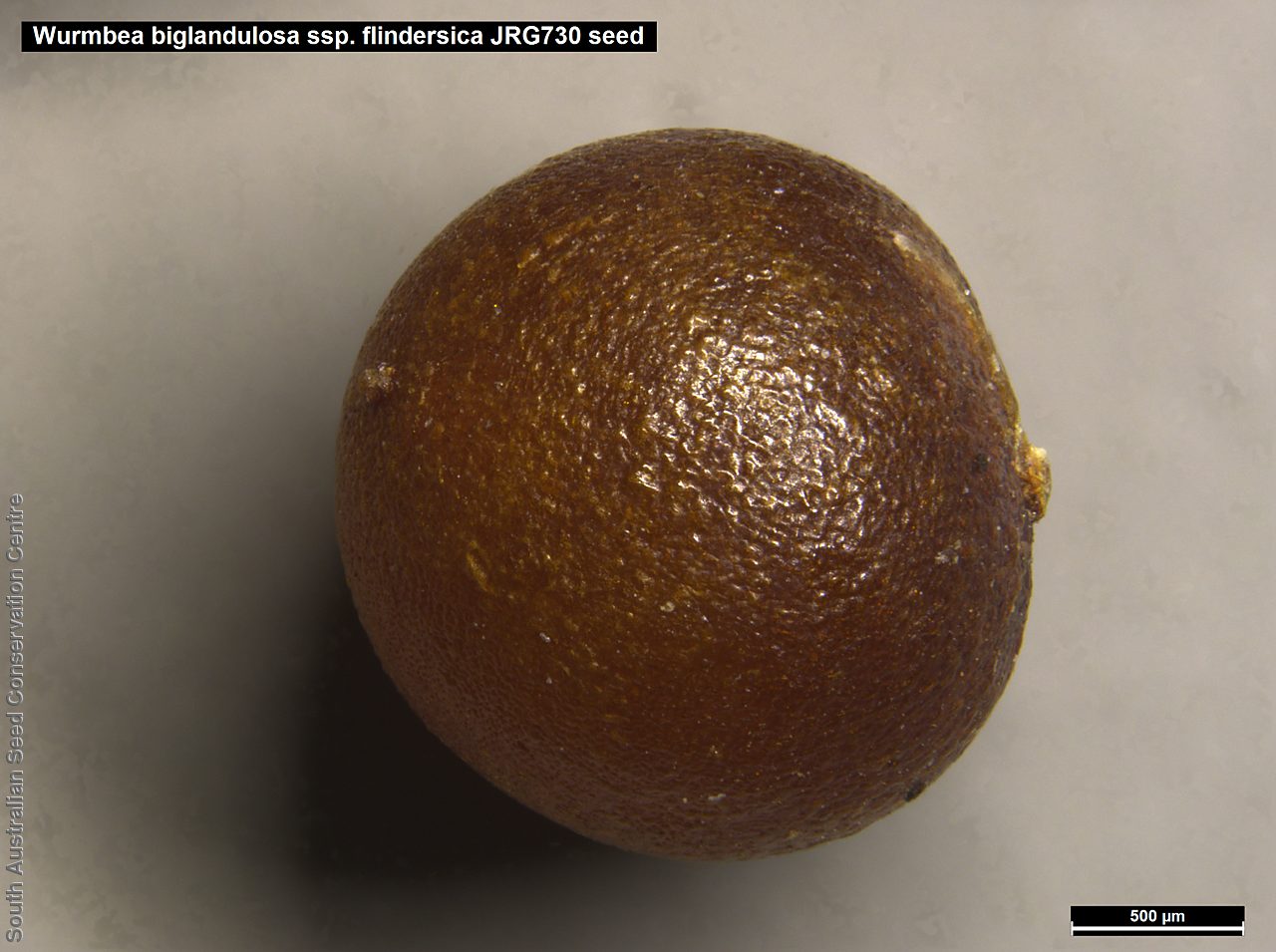
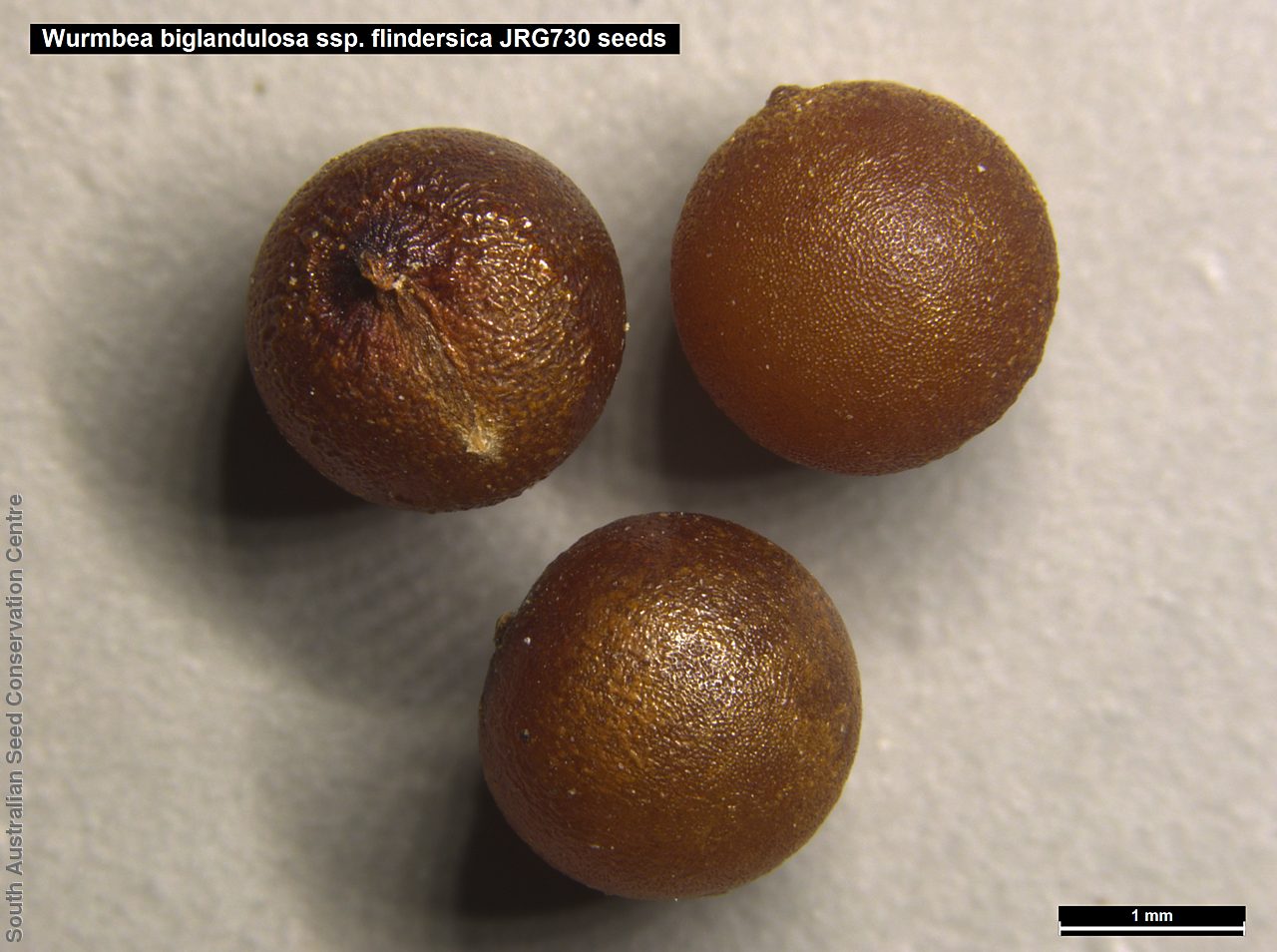
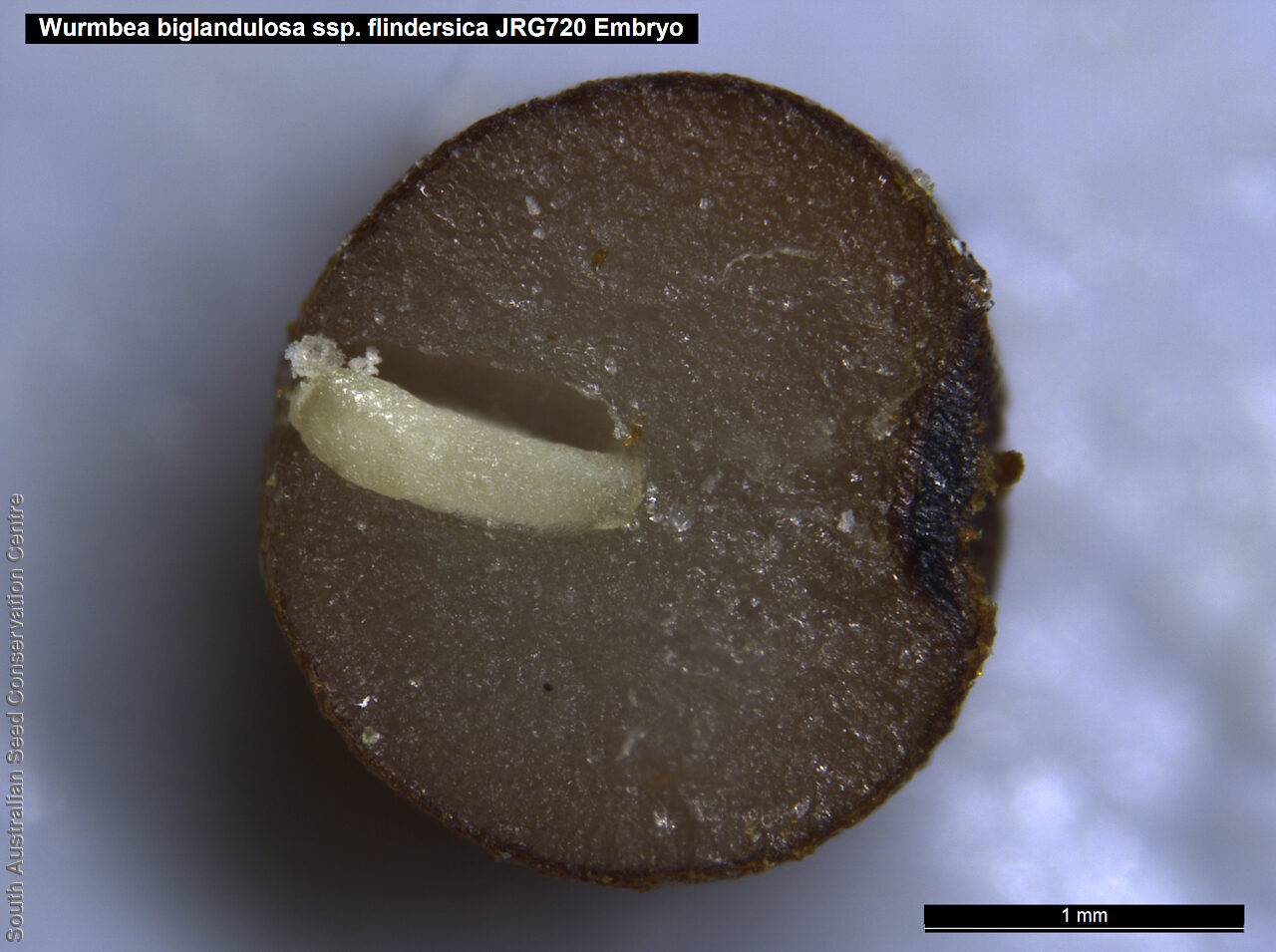

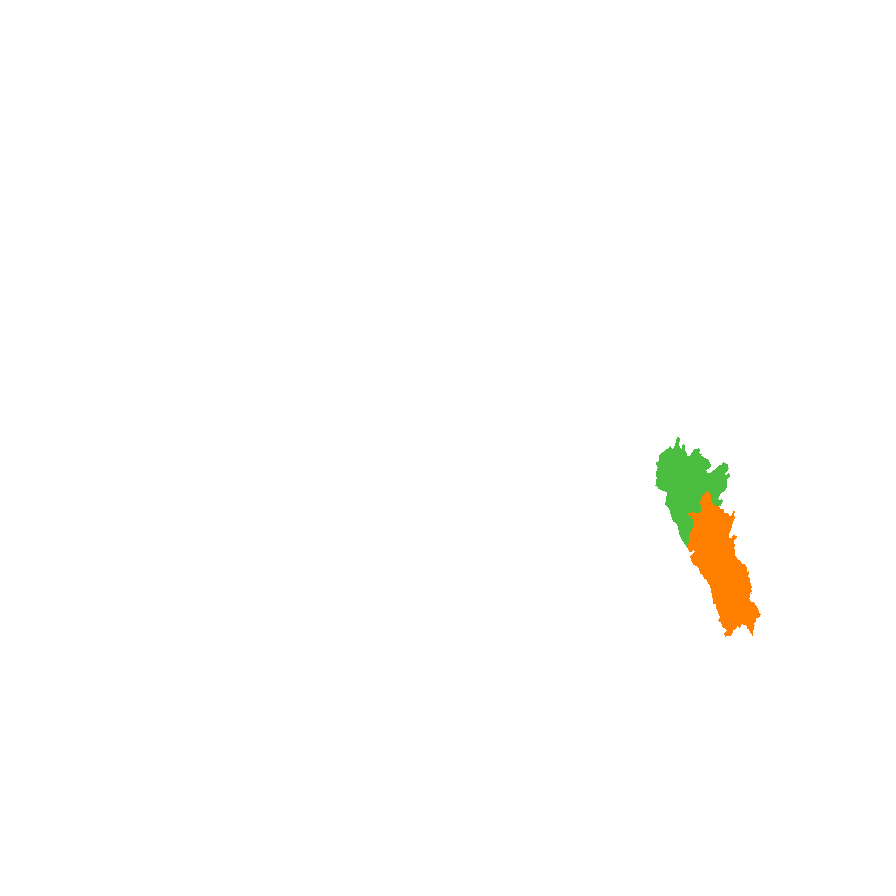
Common names
Flinders Ranges Star-lily
Flinders Ranges Nancy
Etymology
Wurmbea name after Friedrick Wilhelm von Wurmb, merchant and botanist in 18th century Batavia (Jakarta). Biglandulosa from Latin meaning two types of glands. Flindersica refers to the Flinders Ranges where the subspecies is found.
Distribution and status
Endemic to South Australia and only found in the southern Flinders Ranges, growing in open woodland on rocky slopes in fertile soils. Native. Uncommon in South Australia.
Herbarium regions: Flinders Ranges, Eyre Peninsula, Northern Lofty
NRM region: Northern and Yorke
AVH map: SA distribution map (external link)
Plant description
Large herb to 30 cm high. Flowering between August and October. Leaves 3, well separated with lowest one basal, to 15 cm long, dilated at the base and tapering to apex. Inflorescence spike with 2-6 deep pink outside and pale pink or white star-shaped flowers, each tepals with 2 large nectaries, sweet honey perfume. Flowering between August and October. Fruits are pale brown papery capsule. Seed embryo type is linear under-developed.
Seed collection and propagation
Collect seeds between September and December. Collect mature capsules, those turning pale straw colour and containing hard brown seeds. Place the capsules in a tray and leave to dry for two weeks. Then rub the capsules gently by hand to dislodge the seeds. Use a sieve to separate the unwanted material. Store the seeds with a desiccant such as dried silica beads or dry rice, in an air tight container in a cool and dry place. From one collection, the seed viability was high, at 90%.
| Location | No. of seeds (weight grams) | Number of plants | Date collected | Collection number Collection location | Date stored | % Viability | Storage temperature |
|---|---|---|---|---|---|---|---|
| BGA | 4,100 (12.73 g) | 100 | 1-Oct-2019 | JRG720 Flinders Ranges | 24-Jun-2020 | 100% | -18°C |
Number of plants: This is the number of plants from which the seeds were collected.
Collection location: The Herbarium of South Australia's region name.
% Viability: Percentage of filled healthy seeds determined by a cut test or x-ray.